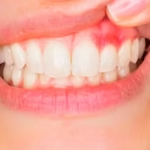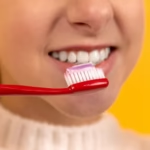Straightening your teeth can significantly enhance your smile and improve your overall oral health. When considering orthodontic treatment, you might find yourself choosing between clear aligners and traditional braces. Both options have their advantages and disadvantages, and the best choice for you depends on your individual needs and lifestyle. At Blanc Dentistry, we offer both treatments and are here to help you make an informed decision. This blog post will compare clear aligners and traditional braces, highlighting their pros and cons.
What Are Clear Aligners?
Clear aligners are a modern orthodontic treatment that uses a series of custom-made, transparent plastic trays to gradually shift your teeth into the desired position. Each set of aligners is worn for about two weeks before moving on to the next set in the series.
What Are Traditional Braces?
Traditional braces consist of metal brackets that are bonded to the teeth and connected by wires and elastic bands. The braces apply continuous pressure to move the teeth into alignment over time. They are typically adjusted by an orthodontist every 4-6 weeks.
Pros and Cons of Clear Aligners
Pros:
- Discreet Appearance:
- Clear aligners are nearly invisible, making them an attractive option for individuals who want to straighten their teeth without noticeable braces. This is especially appealing for adults and teens who may feel self-conscious about wearing braces.
- Removable:
- Clear aligners can be removed for eating, brushing, and flossing, allowing for better oral hygiene and fewer dietary restrictions. This flexibility makes it easier to maintain good dental care throughout the treatment.
- Comfort:
- Made of smooth plastic, clear aligners are generally more comfortable than metal braces, which can sometimes irritate the inside of the mouth.
- Convenience:
- Clear aligners require fewer visits to the orthodontist compared to traditional braces, as there are no adjustments needed. Patients typically visit their dentist every 6-8 weeks to receive new sets of aligners and monitor progress.
Cons:
- Discipline Required:
- Clear aligners must be worn for 20-22 hours a day to be effective. Patients need to be disciplined about wearing them consistently and removing them only for eating and oral care.
- Cost:
- Clear aligners can be more expensive than traditional braces, although the exact cost depends on the complexity of the case and the duration of treatment.
- Not Suitable for All Cases:
- Clear aligners may not be the best option for severe orthodontic issues, such as significant bite problems or complex tooth movements. Traditional braces might be more effective in these cases.
Pros and Cons of Traditional Braces
Pros:
- Effective for Complex Cases:
- Traditional braces are highly effective for treating a wide range of orthodontic issues, including complex cases involving significant tooth movement or bite correction.
- No Discipline Needed:
- Unlike clear aligners, braces are fixed to the teeth, so there’s no risk of forgetting to wear them. This makes them a good option for younger patients or those who might struggle with the discipline required for aligners.
- Variety of Options:
- Modern braces come in various materials, including metal, ceramic, and lingual (behind the teeth) braces, offering options for those who are concerned about aesthetics.
Cons:
- Aesthetic Concerns:
- Traditional metal braces are more noticeable than clear aligners, which can be a concern for some people, especially adults and teens.
- Dietary Restrictions:
- Patients with braces need to avoid certain foods that can damage the brackets and wires, such as sticky candies, hard foods, and gum.
- Oral Hygiene Challenges:
- Braces can make brushing and flossing more challenging, increasing the risk of plaque buildup, tooth decay, and gum disease if proper oral hygiene is not maintained.
- Discomfort:
- The brackets and wires of traditional braces can cause discomfort and irritation in the mouth, especially after adjustments.
Making the Right Choice
The decision between clear aligners and traditional braces depends on various factors, including your specific orthodontic needs, lifestyle, and personal preferences. Here are some questions to consider:
- How concerned are you about the appearance of your orthodontic treatment?
- Can you commit to wearing aligners for the required number of hours each day?
- Do you have a complex orthodontic issue that might be better treated with braces?
- Are you looking for a more comfortable option?
- What is your budget for orthodontic treatment?
Conclusion
Both clear aligners and traditional braces offer effective solutions for straightening teeth and improving oral health. At Blanc Dentistry, our experienced orthodontists can help you determine which option is best suited for your needs. Whether you choose the discreet, removable convenience of clear aligners or the tried-and-true effectiveness of traditional braces, we’re here to support you every step of the way.
Schedule a consultation with Blanc Dentistry today to discuss your orthodontic options and start your journey toward a beautiful, confident smile.


